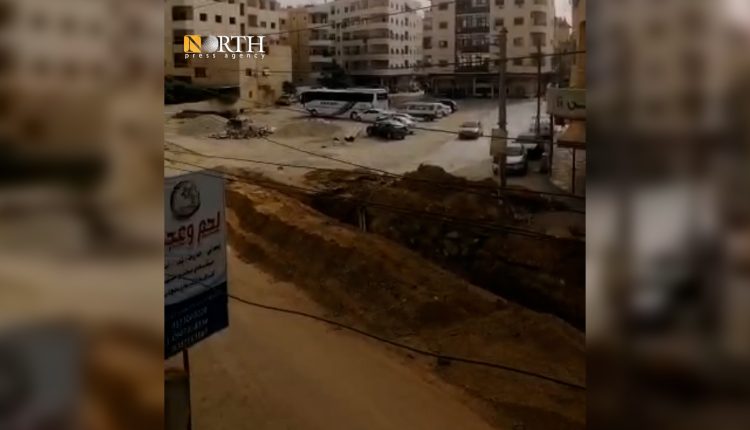Clashes near Syria’s Damascus Force Closure of Key Highway to Daraa
By Kardo Roj
DAMASCUS, Syria (North Press) – A major highway connecting the Syrian capital to the southern governorate of Daraa remained closed on Tuesday due to ongoing armed clashes in the town of Ashrafiyat Sahnaya, located in the western countryside of Damascus, according to officials in Rural Damascus.
The escalation follows renewed unrest in nearby Jaramana earlier this week, reflecting a broader deterioration in security conditions across several districts in the southern outskirts of Damascus.
Officials confirmed that “unlawful armed groups” had taken positions in and around Ashrafiyat Sahnaya, targeting passing civilians and disrupting traffic on the Daraa highway, one of the main arteries linking Damascus to southern Syria.
In a statement released via social media, the Media Relations Office of Rural Damascus said that while the Daraa highway remains blocked due to security threats, alternative routes remain open for civilian use.
“The Damascus–Suwayda and Damascus–Daraa roads are operational through the old Daraa route,” the office noted. “Internal Security Forces are deployed along these routes to safeguard travelers and ensure the uninterrupted movement of civilians.”
Authorities urged residents to avoid Ashrafiyat Sahnaya and to adhere strictly to designated alternative routes until the area is fully secured.
Witnesses and local media reported that several civilians were killed or wounded in the past 24 hours as a result of sporadic attacks attributed to the armed groups. These groups have not been officially identified, though pro-government outlets described them as “outside the law,” a term often used to reference local militias or criminal elements acting without state sanction.
The unrest in Ashrafiyat Sahnaya appears closely linked to the earlier outbreak of violence in Jaramana, where a confrontation between local armed actors and state security forces left over 20 people killed or injured. That incident prompted emergency reconciliation efforts involving Druze religious leaders and government officials to restore calm.
Security experts suggest that the volatility in Jaramana may have emboldened other groups in the region to act against state forces or settle local grievances through force.
“The situation reflects the fragility of the security environment in areas where governance is uneven and local tensions have been left to fester,” said a Damascus-based analyst familiar with the region’s tribal and sectarian dynamics.
Residents in Ashrafiyat Sahnaya reported an almost complete standstill of daily activity, with schools, businesses, and public services either shut down or operating at minimal capacity.
“People are afraid to leave their homes. You can hear gunfire at night, and movement on the roads has stopped completely,” a local resident told North Press on condition of anonymity.
The closure of the Daraa highway has also raised concerns among humanitarian organizations, particularly given the route’s importance for aid delivery and civilian movement in southern Syria, including to regions near the Jordanian border.
While the Syrian government maintains that its security forces are working to contain the situation, the presence of loosely organized armed groups in the Damascus countryside poses an ongoing challenge to state authority and efforts to stabilize the region.
Security operations are expected to intensify in the coming days as authorities attempt to clear Ashrafiyat Sahnaya and reopen the Daraa highway. However, the incident underscores deeper challenges in maintaining order across a landscape fractured by years of conflict, informal militias, and unresolved political tensions.
For now, Syrian government internal security forces remain deployed across multiple flashpoints in Rural Damascus, and authorities continue to urge cooperation from local communities to prevent further violence.

